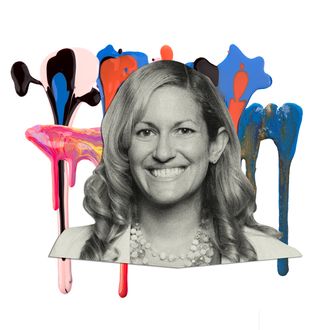
As Google’s chief sustainability officer, Kate Brandt leads the company in incorporating business practices that reduce its carbon footprint, making operations more sustainable and helping the public discover ways to reduce food, water, and energy waste. Google aims to be the first major company to operate entirely on carbon-free energy by 2030, and Brandt is leading those efforts.
After graduating with a master’s degree in international relations from the University of Cambridge, Brandt joined the Obama campaign in 2008 as a deputy director in Florida. A week after the election, she moved to Washington, D.C., and accepted a role as policy analyst for the White House’s Office of Energy and Climate Change. Later, Brandt served as energy adviser to Navy Secretary Ray Mabus, advancing the use of biofuels in ships and planes. For her work, Brandt received the Distinguished Public Service Award, the highest award that the U.S. Navy can give to a civilian.
Today, Brandt has taken the sustainability lessons she learned in Washington and is applying them in Silicon Valley. In addition to the pursuit of carbon-free data centers, Brandt and her team are working to provide Google Search users with energy-saving tools. She lives in Northern California with her husband and 2-and-a-half-year-old daughter. Here’s how she gets it done.
On a typical workday:
I get up each morning around 5:30 a.m. and meditate and stretch before going for a hike. When I get back I spend time with my daughter before I have to head out the door. At work, we approach sustainability by embedding it across the business, so one day I might be talking to our food team about how they’re reducing food waste, or meeting with our Search team to discuss the extreme heat alerts they’re rolling out to help people stay safe during heat waves. I split my time between internal engagement on strategy, providing subject-matter expertise, and managing my team. I try to get home by 5:30 p.m. to spend evenings with my family and cook.
On her career trajectory:
I’ve always cared deeply about conservation and knew it would play a role in my career. I live in Marin County, about 15 minutes from where I grew up. As a child, I spent so much time outside playing in the tide pools and hiking among the redwood trees. So I studied international relations as an undergraduate at Brown University and in the master’s program at University of Cambridge — I’ve always been interested in looking at the role of natural resources, climates, and climate security.
I started doing this work almost two decades ago, and back then climate change wasn’t front of mind for many people. In the last few years, the extreme weather we’ve witnessed has brought it to the forefront. Sadly, it seems as though everyone has experienced a wildfire, terrible air quality, flooding, torrential rain, or other aspects of extreme weather. Young people in particular care about this issue since it affects the world they’re inheriting. I think about my daughter’s future … I’ve seen the climate models for 2100. They’re not good, and we need to take action now.
On the moment when she felt like she’d “made it,” professionally:
In my last job at the White House, I served as chief sustainability officer and helped to create an executive order that included a sustainability strategy instructing federal agencies to cut greenhouse-gas emissions by 40 percent over the next ten years. We worked on it for months, got all the approvals, and then the day arrived when President Obama would sign it. Katy Kale, who served as assistant to the president for management and administration, invited me to watch. As I was standing in the doorway, they decided to bring in the press pool, and Brian Deese, the president’s senior adviser, pulled me into the Oval Office. We both stood behind the president while he signed the executive order that I was so proud to have worked on. The story and our photo made the front page of the Washington Post. It was a good day.
On the people who help her get it done:
I’m lucky — my parents live 15 minutes away and can care for my daughter. She’s also had great babysitters and starts a toddler program in the fall. My husband is amazing and a great co-parent. At work, both my direct team and our whole cross-functional team are incredible. I also have a terrific executive assistant, and don’t know how I’d live without him. I know I’m lucky to have such great professional and personal support systems.
On how she stays focused:
Early in my career, while working in Washington, D.C., I was fortunate to have been given a lot of responsibility. I would occasionally have moments of self-doubt, but I overcame them by staying focused on the mission, on the impact I wanted to have, and ensuring I was helping to make the change I wanted to see in the world. When I was 24, I worked at the Pentagon. I remember looking around the table and realizing I was the only woman and the only person under 50. I felt confident knowing that I was contributing, while also learning a lot. I was excited about how I could drive the change I want to see.
On practicing sustainability at home:
I’m constantly experimenting, like sweeping my house to get all the chemicals out of our lives, using all-natural products, choosing to wear makeup without chemicals, and tapping into wardrobe rentals. My husband and I have also worked to make our house more sustainable by using solar energy and practicing composting.
This interview has been edited and condensed for length and clarity.

